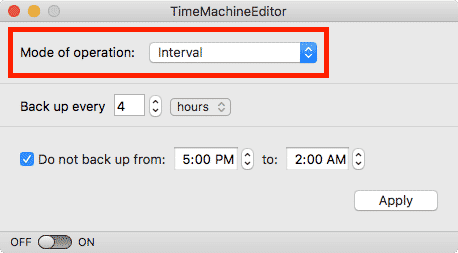
#TIME MACHINE BACKUP SCHEDULER ARCHIVE#
Recovery from a password-protected archive stored on tape does not work in some cases. Adding a user to Unit/Organization Administrators list fails if the domain user is not specified in "Domain\Username" format. Scheduled "Backup replication" plan does not work after disabling and changing its schedule and re-enabling it back. Agent for VMware (Virtual Appliance), Bootable Media: Service_process.exe may crash when accessing the backup location on network share accessible by both NFS and SMB protocols, due to NFS browsing enabled in kernel parameters. Service_process.exe may crash when applying retention rules to an archive on Windows Server 2019 in rare cases. Security: potential password leak in "AccountServer" component with enabled debug logging.
#TIME MACHINE BACKUP SCHEDULER UPDATE#
Security: jQuery version 1.10.1 update to version 3.5.0 is required to fix known security issues. Issues fixed in build 16428 (March 26, 2021) Common This section describes issues that have been fixed in Update 6.

What's new in Update 6 VMware vSphere 7.0 support Its intuitive, web-based management console provides full oversight on the backup management tasks and monitoring in 25 languages.Īcronis Cyber Backup 12.5 is available in two editions: Acronis Cyber Backup 12.5 Standard and Acronis Cyber Backup 12.5 Advanced. Its proprietary AI- and ML-based technology features proactively prevent cyber attacks, stop questionable behavior, and automatically recover damaged files.

Acronis Cyber Backup provides flexible storage options: NAS, SAN, tapes, disks, Acronis Cloud, or any private or public cloud, such as Azure, AWS, or Google. It ensures business uptime by spinning up backup on a virtual machine or by restoring an entire system to new, dissimilar hardware, overcoming compatibility issues. We are happy to introduce Acronis Cyber Backup 12.5 – the most secure backup solution on the market, capable of protecting 20+ platforms no matter the size or location – on-premises, in remote systems, in private and public clouds, and on mobile devices.


 0 kommentar(er)
0 kommentar(er)
